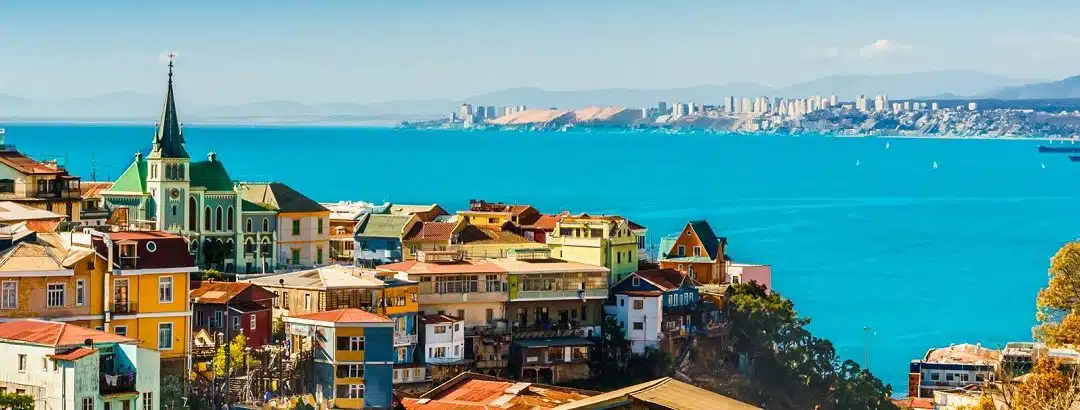admin | 11/12/2020
 Interview with Pablo Ferragut, head of the Sustainable Management and Natural Gas Area at ARPEL
Interview with Pablo Ferragut, head of the Sustainable Management and Natural Gas Area at ARPEL
The natural gas market in Latin America has a secret that gives it immense potential: outstanding natural reserves and resources and clear opportunities for expansion. This part of the system is essential both for the region’s economic development and energy transition. To achieve both of these objectives, it must overcome serious challenges, such as improving its infrastructure network and managing the impact of COVID-19. Pablo Ferragut, head of the Sustainable Management and Natural Gas Area at ARPEL, explains more in this interview.
- Tell us about ARPEL, about its origins and mission within the oil, gas, and biofuel sector in Latin America.
ARPEL is the Regional Association of Companies in the Oil, Gas, and Biofuel Sector in Latin America and the Caribbean. It was founded in 1965 by eight national oil companies as a vehicle for industry cooperation to drive continual improvement. Today, our association has 25 member companies that operate in most of the region’s countries and are leaders in the sector. We have national companies and private operators and service providers. Likewise, we have an extensive institutional collaboration network that includes both the sector’s national institutions and the main international organizations working in energy, climate, and sustainability.
Lastly, I would like to say that our primary mission gathers more importance every day, as the magnitude and complexity of the challenges facing the energy industry mean that it is imperative for there to be cooperation between the sector’s companies and, of course, with governments, international organizations, and civil society.
- You are on the Gas and Energy Committee, a source of enormous value in the region. What are the most significant potential gas reserves in Latin America?
ARPEL began its Gas and Energy Committee in 2014 to address the growing need of companies to develop this field. Today, natural gas is at the heart of discussions about the energy transition and has demonstrated outstanding growth in recent years.
From the standpoint of reserves, Venezuela is at the top with 222 tcf (trillion cubic feet). This is one of the countries with the largest reserves in the world, on par with Saudi Arabia and United Arab Emirates, only behind the United States, China, Russia, Iran, Qatar, and Turkmenistan. However, it is not the country with the greatest level of development of its gas resources.
Brazil and Argentina follow it with around 13 tcf, and both countries have shown tremendous momentum in developing their reserves in recent years. In Brazil this is due primarily to the excellent development of offshore fields in the pre-salt region, while in Argentina it is the result of its investments in nonconventional reservoirs, particularly in Vaca Muerta.
Another step back are Trinidad and Tobago and Peru with 10 tcf. Both countries have an exciting level of development of their resources and significant potential. They also share a characteristic—the two large-scale LNG terminals existing in the region are there, both of which are important actors in the international LNG market.
Slightly further back is Bolivia with 7.5 tcf. It is, however, one of the primary producers, as it is an important provider of gas for Brazil and Argentina through gas pipelines. It is followed by Colombia with 3.6 tcf and a mature and developed internal market.
Finally, I would like to mention Mexico, which is a large consumer of natural gas and has a reserve level of 6.3 tcf.
- With regard to the gas infrastructure system, in your opinion, what would be the most important components for the Latin American region?
Due to the nature of natural gas and its uses, infrastructure is an extremely important aspect in the natural gas value chain, as it connects reservoirs with consumers.
First, I would like to note the infrastructure associated with LNG. Today there are regasification terminals in Argentina, Brazil, Chile, Colombia, Panama, the Dominican Republic, Puerto Rico, Jamaica, and Mexico. Additionally, there are projects under construction or being planned in Brazil, Colombia, El Salvador, and Nicaragua. In general, we are talking about large regasification terminals, primarily FSRUs with send-out capacities of 10-15 million m3 and storage for 150,000 m3.
Continuing with LNG and as I said in my last response, there are two liquefaction terminals: Atlantic LNG in Trinidad & Tobago and Perú LNG. The former began operations in 1999 and currently has a liquefaction capacity of 15 million metric tons per year. In addition, this country is one of the world’s main producers of ammonia and methanol, two products with a good outlook in the energy market.
Additionally, Perú LNG began its liquefaction operation in 2010 and, in 2019, exported 8.3 billion m³ of natural gas, approximately 40% of Peru’s production. With regard to new liquefaction terminals, there are projects in Mexico and Argentina.
It is also important to note the international gas pipelines and pipeline networks in each country. Regarding the former, we can say that there is a good level of interconnection in the Cono Sur region, as Argentina, Bolivia, Brazil, Chile, and Uruguay are connected by gas pipelines. Meanwhile, there are many opportunities to optimize their use with greater regional integration.
Mexico imports more than half of its consumption from the United States through gas pipelines. There is also a pipeline that connects Colombia with Venezuela.
With regard to national pipeline networks, there are certain countries with a relatively good level of development, such as Argentina, which is seen in its high percentage of residential use, Bolivia, Chile, Colombia, and Trinidad and Tobago itself.
In Mexico, there is extensive pipeline infrastructure, however it lacks development of distribution networks; Brazil, despite having a good level of development on almost the entire Atlantic coast, is a very large country with significant opportunities to invest in infrastructure.
In Peru, distribution infrastructure is concentrated in the capital. Although there are several expansion efforts to other regions through the program for mass use of natural gas.
Other countries in Central America or the Caribbean, have no gas resources within their territory, and installing thermal generation plants is the primary driver for project development, which will allow regasification investments to be leveraged, thereby replacing oil derivative imports.
To summarize, Latin America has excellent natural gas reserves, in addition to opportunities to expand markets, but there must be a greater level of infrastructure development that can create value from these resources, generating wealth and effectively reducing greenhouse gas (GHG) emissions both within the region and while supplying other markets.
- Could you explain to us some of the strategic projects that are underway or in planning that could have an impact on the region?
From the upstream standpoint, I believe the Vaca Muerta reservoir has already transformed the Cono Sur region’s markets and will continue to do so. Additionally, increased recovery of natural gas from Brazil’s pre-salt region could be a game changer in the region. Also, the discovery of the mega oil reservoir in Guyana, which is now in production, and more recently the discoveries made in Suriname could bring with them natural gas development in those countries in the medium term.
Next are the LNG regasification terminals, particularly Pacific LNG, which is currently out to tender to be installed in the Bay of Buenaventura on Colombia’s Pacific Coast. It is estimated that it would begin operations by mid-decade. There are also the LNG terminals to be installed in Central America and the Caribbean, which would incorporate natural gas in countries where there is currently no infrastructure. They would also be transformative projects in each of those countries.
Regarding Brazil, not just the new LNG terminals, including the one under development in Porto do Açu, the one recently opened in the northeastern state of Sergipe, and others that could be installed in the future, there are two other aspects that could be considerably transformative and have an impact on regional markets.
First, the new Natural Gas Act aims to establish a more open, dynamic, and competitive market that could drive development of projects and lower the price of natural gas, promoting greater industrial development. Second, infrastructure development could achieve greater recovery of gas resources from the pre-salt layer, primarily gas associated with oil that is reinjected today and could increase the country’s natural gas supply.
Lastly, I believe there is significant potential to undertake projects in land and sea transportation, and there are many countries working in this regard.
- From your point of view, which countries in the region have the greatest level of development in natural gas energy? Which have the greatest potential for growth?
There is significant potential for business development throughout the region. Although the opportunities are vastly different in each country as they are affected by different drivers, as I mentioned in previous responses.
- For the natural gas sector, which industries/activities currently represent the greatest demand?
Natural gas is quite a versatile product with a high level of flexibility. It can be used as fuel to generate electricity, in industry, transportation, and for residential uses such as cooking food, heating water, and heating homes. Its liquids in turn can be used as a raw petrochemical material or to produce LPG.
Although the primary uses depend significantly on each country, electricity generation is the most important market. Natural gas currently makes up 28% of the region’s electricity generation system.
This fuel is not only more efficient and cleaner than coal and oil derivatives, but it also provides significant flexibility for electricity markets as plants powered with natural gas can quickly begin operation and send energy, which is a very desirable characteristic in systems that we expect to heavily incorporate variable renewable energies (wind, solar, and others) in the coming years. That makes it an excellent complement for these energy sources and technologies that already provide security, scalability, stability, and reaction time for system operators.
In the large consumer markets, industry is also certainly a significant consumer of natural gas.
In countries like Argentina, residential consumption is a more significant component, and other resource-rich countries, like Bolivia and Peru, are making significant efforts to promote its consumption.
Finally, I would like to make a note about transportation: while not being significantly developed—except for CNG in some countries like Argentina, Bolivia, Peru, Colombia, and Brazil—I believe there are significant opportunities for development of that market, thus reducing emissions and improving air quality.
- How has the pandemic affected the sector? Have there been significant variations with regard to production and demand?
The impact depends significantly on the consumer market. However, what we can say is that natural gas has proven itself to be much more resilient than oil derivatives, precisely because its consumption is not as connected to transportation and international trade or aviation, which were without question the markets most affected by the economic shutdowns resulting from the COVID-19 pandemic.
Worldwide, it is expected that natural gas consumption for 2020 will decrease by 3% compared to 2019, primarily due to the pandemic and its economic consequences, but there is a good outlook for recovery already in 2021, and the long-term growth pattern is expected to continue.
- What are the primary measures that production and transportation companies have had to take to continue their operations?
These have certainly been challenging times for everyone and maintaining operations at oil and gas companies has forced us to learn at an exceedingly accelerated rate about how to effectively manage risks, care for workers, and continue to supply society.
The measures themselves are no different from what has been done in other sectors. In other words, companies began switching to remote work for the positions where it was possible, reducing shifts and contact, changing the shift system, using personal protective equipment, testing workers, establishing protocols, and, in addition, taking steps to provide people with psychological support and aid.
At ARPEL, we have supported this process by providing virtual exchange events with health and safety professionals at the region’s oil and gas companies, where they presented their challenges, questions, practices, and progress. These exchanges served as a space for cooperation to resolve specific problems.
In total, we held 17 virtual exchange meetings once a week between March and August. Professionals from more than 60 companies and organizations from around 20 countries participated in these meetings.
- Many countries have announced significant investments in a number of sectors in an effort to reactivate their economies. In your opinion, what type of investments would be crucial for the natural gas sector?
In general, investments to promote recovery take shape as infrastructure projects, and, as was mentioned before, the natural gas value chain is especially connected to the implementation of large projects such as gas pipelines, distribution networks, and LNG terminals.
I believe there are opportunities in every country, and not just large projects, but also smaller and scalable projects to drive change, such as in the transportation sector on land, rivers, and sea, which revive the economy and, again, contribute to reducing greenhouse gas emissions.
- Natural gas is seen as an essential component in the energy transition. How far along is the region in this field?
At present, natural gas represents a quarter of the primary energy network and a bit more in the region’s electricity generation system as a whole. Naturally, the situation is quite varied. There are countries like Argentina where 50% of their energy network is natural gas and other countries where they simply do not use this energy, as they do not have the resource and have not developed the infrastructure.
The resource is abundant in this region, and it is also a technology that is very mature and tested to be effective, which makes it an attractive cost-effective option to reduce emissions in the short term and generate development at the same time, while other energy technologies continue to mature. In addition, it is excellently complemented by variable renewable energies (solar, wind, etc.) and other very promising energy sources, such as hydrogen and biomethane.
Regarding the energy transition’s level of progress, there are countries that have achieved significant transformation of the electrical system, supplying themselves with renewable energy for practically 100% of their generation. These countries are Uruguay, Costa Rica, and Paraguay. Meanwhile, there are other countries that are making progress in decarbonization such as Brazil, Chile, Colombia, Guatemala, and Panama. As a region, Latin America has the greatest proportion of hydroelectricity in its electric grid worldwide, providing it with a greater renewable profile. Additionally, several countries have successfully incorporated unconventional renewable energy sources. However, the energy sector is much more far-reaching than the electricity sector, and there are many challenges in other sectors. Moreover, there are enough natural gas resources in the region to contribute to decarbonization in other parts of the world.
I believe that, with regard to decarbonization, there is a clear tendency throughout the world and also in Latin America. Most importantly, we must find cost-effective solutions that take into account all the available technologies when establishing policies and seeking to decarbonize. In this regard, natural gas can be seen as a good alternative to promote decarbonization of the various uses of energy, particularly electricity generation, industry, and transportation.
ARPEL issued a document in 2020, a white paper on energy transitions that goes in-depth on the role of hydrocarbons in Latin America’s energy transition. The document can be downloaded on the association’s website.
- To conclude, looking towards the future, what trends in applications/uses both in the natural gas industry and the biofuel industry provide the greatest opportunities to promote the sector’s progress?
In this regard, I believe there are especially traditional uses such as electricity generation or industrial processes that continue to present excellent opportunities, as they have a particularly positive cost-effective impact on emission reduction and efficiency. However, I believe that currently cargo transportation has notable opportunities to implement projects in our region.
Technological progress will also help to reduce methane and CO2 emissions throughout the value chain and lifecycle of natural gas by using technologies such as carbon capture, utilization, and storage and the gains in efficiency achieved in every process.
In addition, natural gas offers excellent complementarity options with hydrogen—both blue and green—and biomethane. So, I think we will see a much higher level of integration in these worlds in the medium term.
 Pablo Ferragut is an economist and expert on energy, climate, energy transitions, and corporate sustainability with more than 10 years of experience in the energy sector, most of which were spent working in international cooperation in Latin America and the Caribbean.
Pablo Ferragut is an economist and expert on energy, climate, energy transitions, and corporate sustainability with more than 10 years of experience in the energy sector, most of which were spent working in international cooperation in Latin America and the Caribbean.
He currently works as a project manager at ARPEL (Regional Association of Companies in the Oil, Gas, and Biofuel Sector in Latin America and the Caribbean), as head of the Sustainable Management and Natural Gas Area.





